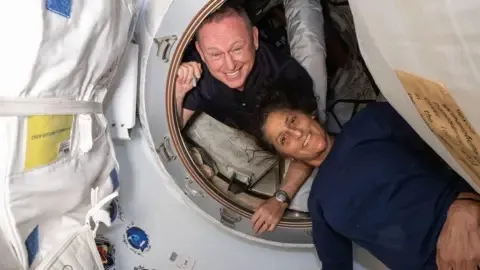Boeing’s Starliner capsule safely touched down in New Mexico’s White Sands Missile Range on Saturday, concluding its automated return journey from the International Space Station (ISS). However, NASA’s astronauts, Sunita Williams and Butch Wilmore, will stay aboard the ISS until SpaceX retrieves them next year due to issues with the Starliner.

Automated Return and Safe Landing
The Starliner, which undocked from the ISS over China, used autopilot to parachute into the desert. The capsule’s descent was captured by cameras, appearing as a white streak against the sky. Despite initial plans for astronauts to return in June, technical problems led to an empty capsule landing.
Technical Issues and Extended Mission
Problems with thrusters and helium leaks led NASA to opt for a fully automated return for the capsule. The astronauts’ return has been delayed, extending their mission to over eight months. SpaceX is scheduled to bring them back in late February.
Mission Challenges and Next Steps
Starliner faced multiple thruster failures and helium leaks post-launch, leading to concerns about its descent capabilities. The capsule’s propulsion system will be analyzed at NASA’s Kennedy Space Center to address these issues. Boeing will review the data to plan future steps for the program.

Ongoing Efforts and Future Prospects
Boeing’s first astronaut flight marks a significant phase in its journey, marked by previous delays and setbacks. With NASA committed to having two US companies for orbital transport, Boeing’s Starliner will play a crucial role in future missions despite past challenges.
Steve Stich from NASA emphasised the importance of the successful test flight for future Boeing missions, reflecting a continued focus on improving and competing in the space transport sector.
